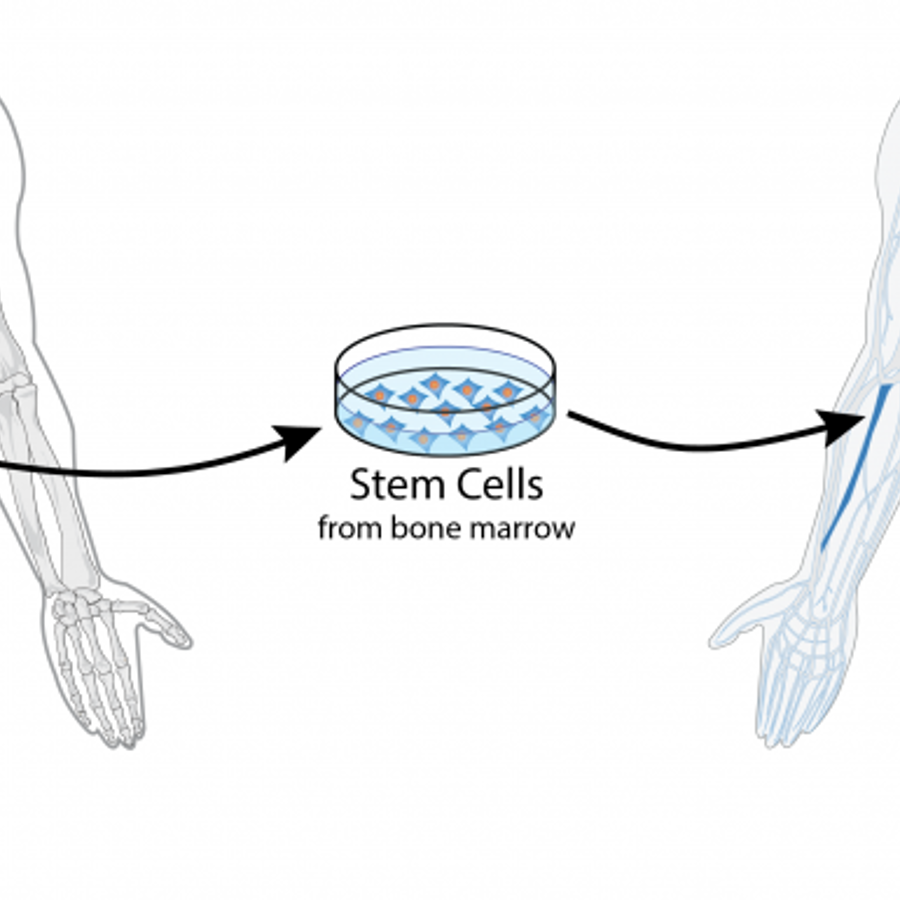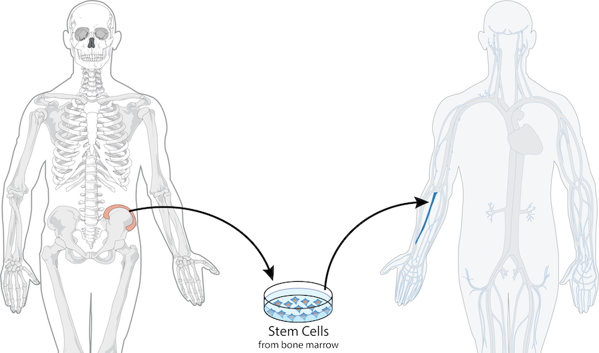
If someone has a bone marrow transplant, would their child look like the donor?
March 4, 2019

- Related Topics:
- Stem cells,
- Reproduction,
- Chimera
A concerned adult from North Carolina asks:
"My daughter had a bone marrow transplant when she was 16. The donor was male. She is now 30 and is pregnant. She just had some blood work done, and the lab called to say that the blood sample they sent in was male, not female! My daughter is now worried about the baby looking like the donor instead of her, and/or having medical issues. Does she need to worry about this?"
Rest assured the baby will not look like the donor! This is due to the fact that the baby will inherit DNA from Mom, not the donor.
Let’s look into what it means to have a bone marrow transplant.
What happens when you have a bone marrow transplant?
To begin, the cells in your body that create blood cells (bone marrow) are destroyed by chemotherapy or radiation.
After all your own bone marrow cells are gone, you’re ready for the transplant. Bone marrow cells are harvested from the donor and injected into you. These new cells make their way into your own bone marrow, where they take up residence.

From that point on, your bone marrow is made up of cells from the donor. These cells do exactly what they’re supposed to: create new blood cells.
This is a type of stem cell therapy. The bone marrow contains stem cells, which just means they’re cells that can keep producing new blood cells indefinitely. They won’t die off, and your body won’t replace them. You’ll permanently have bone marrow cells from the donor.
This means all future blood cells will contain the bone marrow donor’s DNA. That's what happened with your daughter's blood test: it was really looking at the donor's DNA, not hers!
But remember, we have lots of different types of cells including skin, hair, muscle cells and more. Only your daughter’s blood cells will have donor DNA – every other cell in her body will have her own DNA.
Another word for having DNA from two people is chimera. For more on chimeras, check out this previous article.
People who have had stem cell transplants should consider using different sources of DNA for genetic testing. One possible substitute could be using cells from your cheeks or saliva instead.
Whose DNA will the baby inherit?
You may remember that babies are created using egg cells and sperm cells. Since the donor’s DNA is only present in the blood-related cells, the egg will just have the recipient’s own DNA.
That means the baby will inherit their DNA from their biological parent, not the donor. Half of the baby’s DNA will be from one biological parent, and half will be from the other biological parent. And since our DNA plays a role in what we look like, the baby will probably look a lot like both biological parents!
After conception, mom and baby don’t really swap cells (or DNA). The baby receives all its nutrients through the placenta, which mostly keeps everything separate.
There are some tiny exceptions to this. Sometimes a few cells from mom may slip through the placenta into the baby. Or a few of the baby’s cells may go into mom! But even if a few blood cells do enter the baby, those cells usually die off pretty quickly.
So, while it’s theoretically possible that a few blood cells with the donor’s DNA may slip into the baby, they won’t last very long, and they’ll be vastly outnumbered by the trillions of other cells that are the baby’s own personal mix of DNA from their biological parents. Any rare cells with donor’s DNA won’t affect how the baby looks.
So overall, don’t worry! Your grandbaby will have a unique mix of your daughter’s DNA and the other biological parent’s DNA.

Author: Laura Hayward
When this answer was published in 2019, Laura was a student in the Stanford MS Program in Human Genetics and Genetic Counseling. She wrote this answer while participating in the Stanford at The Tech program.
 Skip Navigation
Skip Navigation
